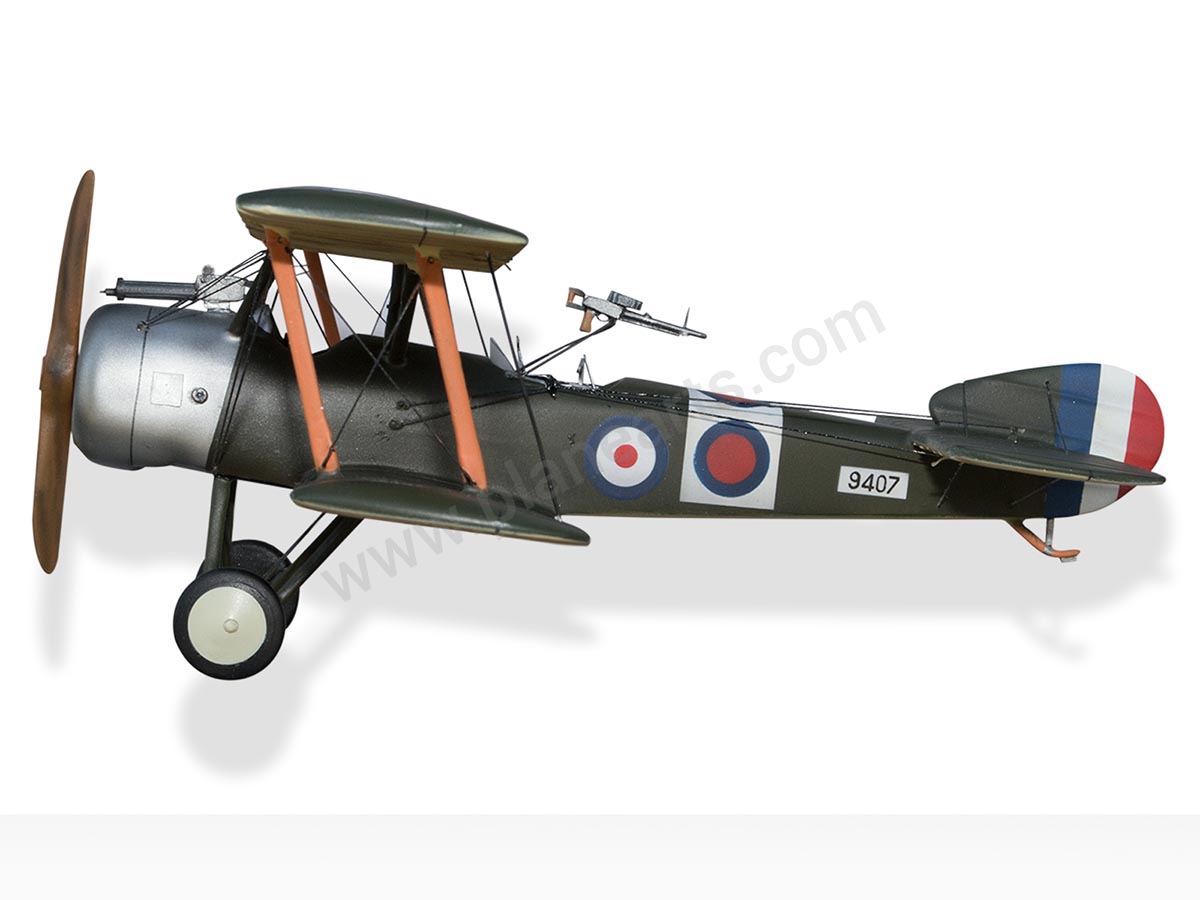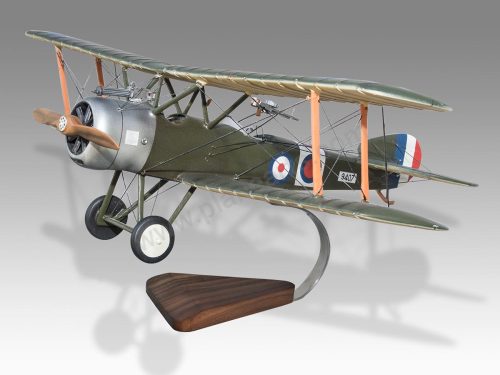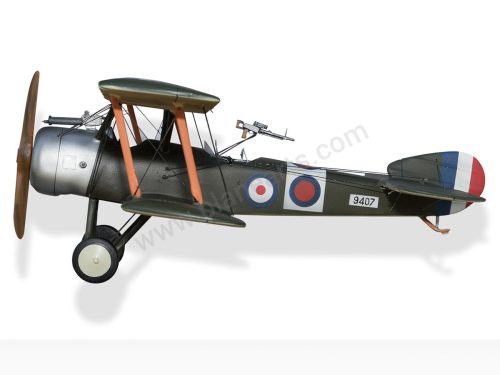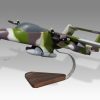Sopwith 1.5 Strutter Royal Flying Corps
Production Time 9 to 10 weeks
Shipment is by FedEx, UPS or DHL International Express Courier with a normal door-to-door delivery time worldwide of within 2-3 business days after dispatch. Due to the current volatility of world fuel prices, the amount mentioned here is our best estimate for DHL and UPS and may be subject to change at the time of shipping.

Model Description: Sopwith 1.5 Strutter Royal Flying Corps Wood Replica Scale Custom Model Aircraft
Manufacturer: Sopwith
Wingspan: 15 Inches (38.1 Centimeters)
Height: 5.2 Inches (13.2 Centimeters)
Scale: 1:24
$279.50
Production Time 9 to 10 weeks
-
United States dollar ($)
-
Pound sterling (£)
-
Euro (€)
-
Australian dollar ($)
-
Canadian dollar ($)
-
Singapore dollar ($)
-
Swiss franc (CHF)
-
Japanese yen (¥)
-
Danish krone (kr.)
-
Hong Kong dollar ($)
-
Norwegian krone (kr)
-
Swedish krona (kr)
-
United Arab Emirates dirham (د.إ)
General Product Description
Our PlaneArts Sopwith 1.5 Strutter Royal Flying Corps model exhibits unique, unrivaled quality and detailed design to come as close as possible to the accuracy of the actual plane. It comes as standard with a robust, durable base or stand which is available in a variety of different finishes designed to match your own personal requirements including solid wood, wood with polished metal supports or adjustable wood wall mount and will be ready within about 9-10 weeks from placement of order.
The Sopwith 1.5 Strutter Royal Flying Corps model is made of the finest kiln dried renewable mahogany wood (commonly known as Lauan or Meranti) which has undergone many stages of carving and meticulous and careful sanding giving the beautiful, finished museum quality masterpiece. Many collectors and model connoisseurs demonstrate their preference for genuine handmade and hand painted mahogany wood models rather than plastic or die cast (diecast) alternatives due to the overall look and totally different feel of the item - we trust you will find the same. We can however, if required produce the same model in Solid Cast Resin so just click and contact us for further information. Our craftsmen and gifted artisans ensure that our finely handcrafted model airplanes match the precise blueprint details of the original aircraft. The paint scheme, markings and parts are closely matched, reflecting the original aircraft. This stylish top-quality desktop replica model will surely enthrall anyone who receives this as a gift and for sure one of the most appropriate and desirably collectable gifts for any military aviation enthusiast and avid aircraft collector whilst also displaying a perfect resemblance to the actual real life version.
There are many types of military propeller aircraft, but the basic types are bombers, fighters, fighter bombers, spotter planes, transporters, patrol aircraft, trainers, and reconnaissance and observation aircraft. All these types of aircraft are used for different types of missions. If you're a fan of historic or present-day military aviation, our model aircraft will bring the excitement and character of these aircraft right into your own home. You can order a wood airplane model of a North American B-25 Mitchell Bomber, a B17 - Flying Fortress, or a P-51 Mustang Nervous Energy V not forgetting the Bf 109, Spitfire, FW 190, A6M Zero, P-38 and F4U. These classic, propeller airplane models are of the highest quality. Each is individually crafted by our expert craftsmen. They produce handmade scale mahogany airplane models of the finest aircraft from World War I and II to present day biplanes and triplanes.
If you require, we can also make the Sopwith 1.5 Strutter Royal Flying Corps model in any other military, government or even private livery or colour scheme you require and if necessary, in a different size or scale. Just click here to contact us with a description or photographs of what you require, and we will let you have a quotation for the necessary customization by return email. We can also make bespoke scale replicas of any other private / civil commercial airliner or airliners, helicopter, glider, gliders with engines, military jet, warplane jets, biplane, triplane, tail fin, spacecraft, rocket or NASA model you require in any airline, military or civilian livery or colors. We also produce model airships, blimps, dirigibles, blimps, boats, and ship collectibles. Wall plaque or seal for military, government or private customers. Again, by clicking here to contact us just let us know exactly what you need.
The Sopwith 1.5 Strutter: A Pioneering Aircraft of the Royal Flying Corps
In the annals of military aviation history, the Sopwith 1.5 Strutter holds a distinguished place as one of the pioneering aircraft of World War I. Developed by the Sopwith Aviation Company, this British biplane made significant contributions to the aerial campaigns of the Royal Flying Corps (RFC), the air arm of the British Army before and during the Great War. Its unique design, versatile roles, and remarkable performance marked it as a key player on the Western Front and beyond.
Development and Design:
The Sopwith 1.5 Strutter, designed by the legendary aircraft designer Thomas Sopwith and his team, was introduced in 1916. It was one of the first British two-seat biplanes to be equipped with a synchronized machine gun, a revolutionary advancement that allowed the pilot to fire a machine gun through the propeller without striking its blades. This feature gave it a considerable advantage over earlier models which lacked this capability.
The aircraft was nicknamed the “1.5 Strutter” due to its unique wing structure; the lower wings were attached to the fuselage halfway between the upper wing and the lower part of the fuselage, creating a “one-and-a-half” wing strut configuration instead of the usual two. This design not only provided enhanced stability and control but also improved the pilot’s and the observer’s visibility, which was crucial during reconnaissance missions and aerial combat.
Roles and Missions:
The Sopwith 1.5 Strutter was incredibly versatile, serving in various capacities including reconnaissance, light bombing, and as a fighter. As a reconnaissance aircraft, it was tasked with gathering crucial intelligence behind enemy lines, often flying at high altitudes to avoid ground fire and enemy fighters. In its bomber role, it could carry a modest payload of bombs, making it suitable for tactical bombing missions targeting enemy trenches, convoys, and strategic positions.
In addition to these roles, the Sopwith 1.5 Strutter was also used as a training aircraft, helping to prepare new pilots for the rigors of aerial combat. Its relatively stable flight characteristics made it an excellent trainer, providing rookie pilots with valuable experience in handling and maneuvering under less demanding conditions before transitioning to more advanced and aggressive aircraft.
Operational History:
The Sopwith 1.5 Strutter saw extensive service with the Royal Flying Corps and its naval counterpart, the Royal Naval Air Service (RNAS), throughout the war. It was deployed on various fronts, from the muddy fields of the Western Front to the distant theaters in the Middle East and Africa. Although it was eventually outclassed by newer German fighters, it remained in service due to its reliability and the high regard pilots held for its handling characteristics.
Its combat effectiveness, however, began to diminish as the war progressed, with advances in aircraft design leading to faster and more heavily armed fighters. By the end of the war, the Sopwith 1.5 Strutter was largely relegated to secondary duties, including training and home defense roles.
Legacy:
The legacy of the Sopwith 1.5 Strutter is marked by its contributions to the development of aerial warfare tactics and aircraft technology. Its introduction of the synchronized machine gun became a standard feature in fighter aircraft, profoundly influencing air combat’s evolution. Moreover, the experiences gained from its deployment helped shape future designs from Sopwith and other aircraft manufacturers, leading to the development of more advanced fighters and bombers in the post-war years.
Today, the Sopwith 1.5 Strutter is remembered not just as a workhorse of the early Royal Flying Corps but as a symbol of the innovation and bravery that characterized the aerial battles of World War I. Its contributions to military aviation continue to be studied by historians and aviation enthusiasts alike, serving as a testament to the ingenuity and courage of early twentieth-century aircrews.
| Weight | 6 kg |
|---|---|
| Dimensions | 12.8 × 15 × 5.2 in |









Reviews
There are no reviews yet.